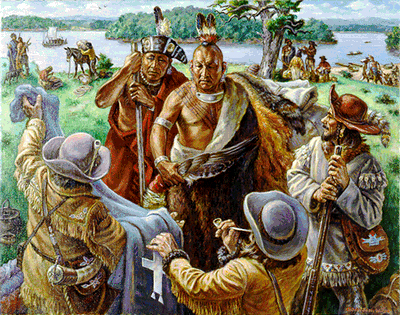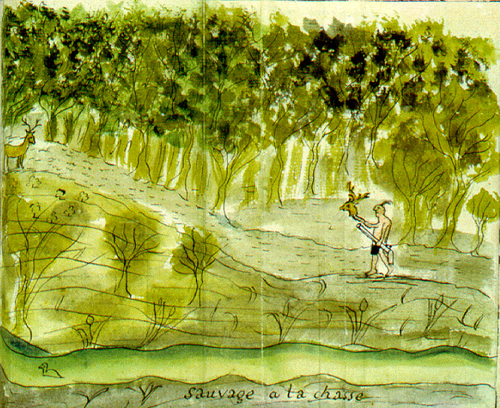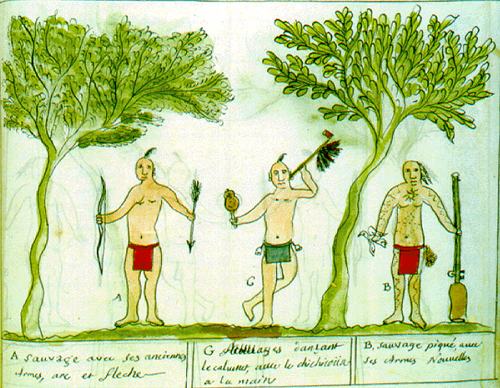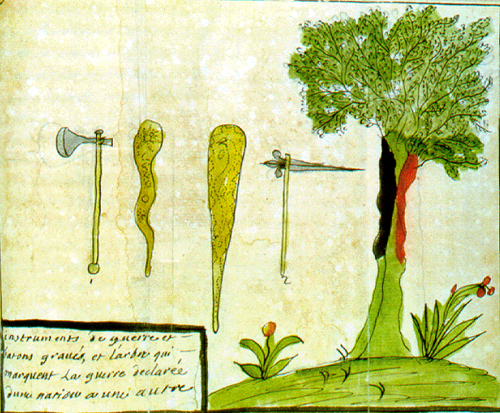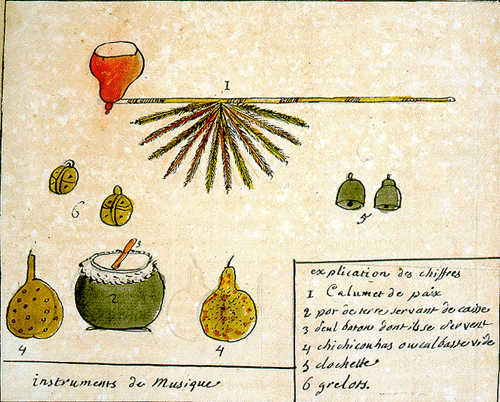Trade Goods
European explorers usually carried many trade goods to give away as gifts or to trade with the Indians for food or other things they needed. Indians eagerly accepted these goods made of new and unusual materials. Many trade goods were also useful for traditional Indian activities.
Here is a series of watercolor pictures made by a French military officer named Jean Francois Benjamin Dumont de Montigny. He was born in Paris in 1696, and joined the French army in 1714 when he was 18 years old. He traveled to French Louisiana in 1719, and spent the next eighteen years traveling throughout the Mississippi Valley. His paintings show Mississippi Valley Indians with many common 18th century trade goods. Images of Dumont’s paintings appear courtesy of The Newberry Library, Chicago. All rights reserved. Can you identify the trade goods in each of the pictures?
The Indian hunter is shown carrying a trade gun. He is trying to lure the deer with a decoy.
The man labeled “A” is wearing a loincloth made of trade cloth. The man labeled “B” has a trade cloth loincloth and he is holding a trade gun. The man labeled “C” (in the center) has two trade bells attached to his loincloth.
The objects on the far left and far right are metal-bladed war clubs. The two central objects are traditional wooden war clubs.
The upper object (Item 1) is the traditional calumet, or pipe, with a decorated wooden shaft and a carved stone pipe bowl. The pipe was used in many Indian ceremonies that included musical performances. Item 2 is a traditional pottery jar over which a skin has been stretched and tied to the rim, creating a drum that can be beaten with the stick (Item 3). Two traditional gourd rattles are labeled Item 4. Item 5 is a pair of brass trade bells. Item 6 is a pair of brass harness bells. Indians enjoyed adding the sound of trade bells to their traditional musical instruments. Question: The trade goods shown in Dumont’s paintings include which categories of items? Try again. Congratulations – you are correct! |
||
 |

|
